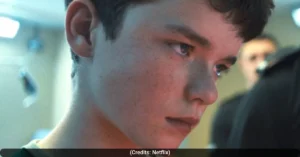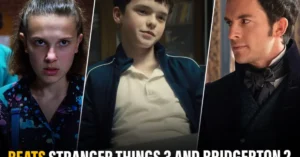The new Netflix limited series Adolescence has gripped audiences, but its intense subject matter has left many parents asking a single, important question: Is this show appropriate for my children? Despite its teenage characters, the series deals with very adult themes. Here is a breakdown of what parents need to know about this hard-hitting drama.
The four-part series Adolescence begins with the arrest of 13-year-old Jamie Miller for the murder of his female classmate. The story then unfolds in real time, exploring the events leading up to the crime and its aftermath on Jamie’s family, the police, and the wider school community. A key feature of the show is that each of its four episodes is filmed in one continuous take, making the viewing experience intensely immersive. While the story revolves around teenagers, it tackles mature and difficult issues including toxic online cultures, cyberbullying, and violence, making it a show parents will want to vet before watching with their teens.
What Is the Show’s Age Rating?
Adolescence carries a TV-MA rating in the United States. This rating means the show is specifically intended for mature audiences and may be unsuitable for children under 17. Similar adult ratings have been applied in other countries. This rating is based on the show’s strong language, violent content, and mature themes, which are consistent throughout the series.
A Detailed Look at the Content
The show’s mature rating is due to several specific types of content that parents should be aware of.
Language and Violence
The series contains frequent use of strong profanity. Words like “f–k” and “s–t” are used regularly by characters. British slang terms such as “nonce,” an insult meaning pedophile, are also featured prominently. The central plot point is a stabbing murder. While the act itself is only shown briefly via distant CCTV footage, the emotional and investigative aftermath is explored in depth. There are also scenes involving physical threats, shouting, and tense confrontations.
Sexual Themes and Social Media
A significant part of the plot involves teenage sexuality and the non-consensual sharing of an explicit photo. The story deals with the serious consequences of this act, which is a form of cyberbullying. There are also references to teens watching pornography and themes connected to online incel culture. The social media platform Instagram plays a major role in the story, depicted as a tool for harassment and social pressure among the teenage characters.
Why Is a Show About Teens Not for Kids?
While the main character is a young teenager, the show is designed for adult viewers. The creators have stated that one of their main goals was to examine the pressures facing young men today.
As co-writer Stephen Graham, who also plays Jamie’s father in the series, explained the aim was to ask, > “What is happening to our young men these days, and what are the pressures they face from their peers, from the internet, and from social media?”
The series serves as a cautionary tale, exploring how online radicalization and toxic masculinity can influence young people. It shows how a teenager can be led down a dangerous path by harmful ideologies found online. The show is not just about a crime, but about the societal and digital environments that can make such a crime possible.
What Are Experts Saying?
Family and entertainment reviewers consistently highlight the show’s power, but also its intensely mature nature. It is widely recommended for adults and older teens, but not for younger children. The series has been praised for starting important conversations. In fact, the show is being streamed for free to secondary schools across Britain to encourage discussions among students and teachers.
British Prime Minister Keir Starmer, a father himself, acknowledged the show’s impact, stating, > “It seems like the whole nation is talking about ‘Adolescence’… As a dad, I have not found it easy to watch this with children, because it connects with the fears and worries that you have as parents and adults.”
Parental Takeaways and Discussion Points
For parents who choose to watch the series, either alone or with their older teens, Adolescence opens the door to several crucial conversations.
- Social Media and Cyberbullying: The show realistically portrays how social media can be used to shame, bully, and harass. Parents can use this to talk about digital respect, privacy, and the real-world impact of online actions.
- Toxic Masculinity and Incel Culture: The series does not shy away from showing how young boys can be exposed to and influenced by harmful ideas about masculinity and relationships online. It’s an opportunity to discuss healthier, more positive attitudes.
- Accountability and Consequences: The plot forces characters to reflect on their roles in the tragedy. This can lead to family conversations about taking responsibility for one’s actions, both online and in person.
The show provides positive adult role models in the form of the investigating detective, Luke Bascombe, and a clinical psychologist, who both approach the complex case with professionalism and empathy.
Also Read: 11 Insightful Scenes Every Parent Should Watch From Netflix’s ‘Adolescence’














